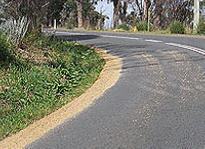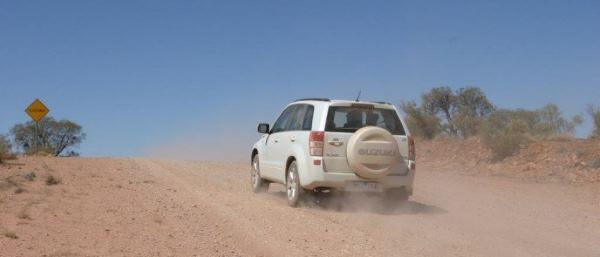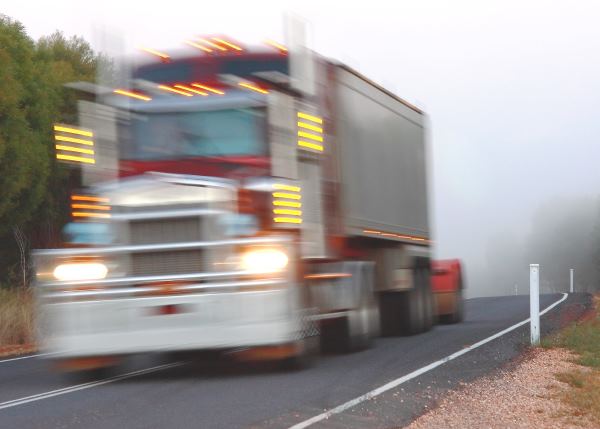A. Speed up and drive over the gravel as quickly as possible.
 You drive up to a corner where you see some loose gravel on the road. You should
You drive up to a corner where you see some loose gravel on the road. You should
A. Speed up and drive over the gravel as quickly as possible.
B. Check the mirrors and change lanes.
C. Slow down.

Loose gravel can be on the road for a number of reasons:
As you can see from the photograph below, the gravel on the side of the road has been pulled into the lane. While this is just a small amount of gravel on the outside of a corner, it can be more severe in areas where vehicles cut the corner, i.e. on the inside of a corner.

The gravel acts like ball bearings under your wheel. This is particularly dangerous for motorcycles because they only have two wheels. Most of the cornering force is transmitted through the outside wheels when you turn as this the direction of weight transfer. In fact, in extreme circumstances there is very little weight on the inside wheels when cornering. For this reason you should try to avoid having your outside wheels run over the gravel.
Do as much of your braking as possible in a straight line before you reach the corner; turning and braking on the gravel will make you even more likely to skid.
When there is gravel over the whole road the action of vehicles driving over it moves it out of the way and it can form small ridges or banks of gravel that are much more slippery than the road. A clean line forms flanked by two ridges of gravel. This can be problematic if the track of your vehicle (the distance between the wheels) is wider than the two lines.
Other road conditions that can be slippery are oil, sand, ice, mud, snow, water and where diesel has been spilled on the road.